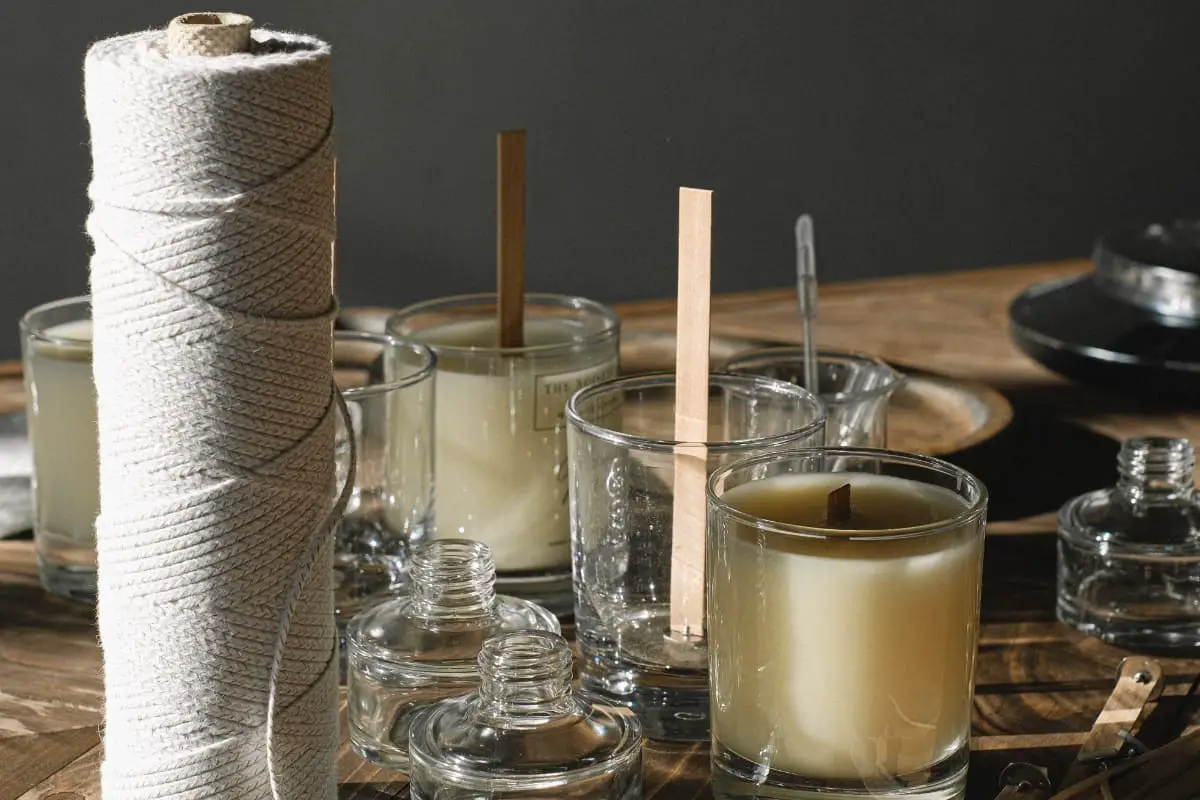While embarking on our candle making “career”, we’ve gone through so many curious outcomes from our experiments – the ones that made me more surprised were those related to the wicks! Those little strings of waxed cotton or wooden sticks are so important for the candle to burn properly, and anyone who has dabbled in candle-making would know there is much more to it than commonly believed, but how exactly would one tackle a fast-burning wick?
Candle wick-burning rates are affected by the compatibility between waxes and different wick types, colors, and the positioning of the wick and their lengths. When all aspects complement each other, it leads to a steadily burning wick.
Plenty of factors need consideration when creating strikingly fragrant and aesthetically pleasing candles. Whether you’re making candles to sell, for gifting, or a personal touch in your own home, we’ve gathered some of the most effective strategies for candle making and fixing fast-burning wicks.
If you are making candles as a side hustle, you may be interested in the complete guide to make candle making a profitable business.
Making Your Candle Wick Burn Properly (Not too Fast, Not too Slow)
The trickiest aspect of candle making is that there is no “one size fits all” solution. As you can read in our previous article, candle wicks should behave like a straw, drawing wax to fuel the flame, but wicks react to materials differently. What matters most is the features of the wick, coupled with how the materials are matched, as some factors affect how the wick will burn.
Compatible Materials
When creating candles, the used materials’ characteristics need to be weighed up in comparison. The wax, oils, and fragrance all need to be considered, as some materials do not perform well together or do not compliment the wick type, which may result in a candle that burns too fast or too slow.
For some context, the table below lists some common wick types, their burn rates, and compatible candle types or waxes.
| Candle Wick Material | Burn Rate (gm./hr.) | Candle Wick Design and Construction | Compatible Candle and Wax Types |
| Zinc Cored | 1.7 – 2.2 | Rigid and made with 100% natural fibres Burns the coolest of all wick types | Paraffin based waxes Container candles Votive candles Tea light candles |
| Paper Cored | 3.2 – 8.7 | Rigid and constructed from 100% natural fibres with a paper core | Paraffin based waxes Container candles Votive candles Tea light candles |
| Square Braided | 4.6 – 12.7 | Made from 100% natural fibers with special treatment Provide a curl when burned, lessening carbon build-up | Pillar candles Taper candles Container candles Viscous materials (beeswax and vegetable wax) |
| Flat Braided | 3.9 – 7.8 | Made from100% natural fibres with chemical treatment, providing a light curl when burned for a self-trimming wick and lessened carbon build-up. | Pillar candles Taper candles Paraffin based waxes |
| LX Series | 4.6 – 7.3+ | Improves burning fragrance Made from pure ring spun cotton yarn Advanced treatment that enables self-trimming and reduces afterglow, smoke, mushrooming, and soot | Pillar candles Container candles Votive candles |
Natural Candle Waxes: Some candlewick types are treated to afford certain attributes, making them compatible with natural or vegetable-based candle waxes, paraffin-based candle waxes, or specific wax blends. Such wick types include Hemp Cored, P, RRD, CD, TL, and ECO Series.
Candle Gels: Certain candle wicks are better suited to candle gels, including HZL Series and HTP Series, with some offering benefits for vegetable or paraffin-based waxes as well.
Paraffin Based Waxes: Some wick types, such as the PK Series, are only compatible with paraffin-based waxes and may burn in undesirable ways if paired with other waxes.
Candle Color and Shades
Although the color may seem solely superficial, it can affect how the wick will burn. Generally speaking, darker candles will burn differently from candles in lighter colors.
Candle and Flame Size
The size and shape can affect the way that the wick burns. Since larger flames produce more soot, heat, and smoke, it can lead to the container cracking and will likely lead to a fast-burning wick.
Candles with flames that are too small may cause inconsistent burning or flames that drown out easily. If wicks are too thin, the heat will not be strong enough to melt through the candle, causing indents around wicks and wasting most of the wax.
Wick Positioning
It can be easy for candlewicks to burn too fast or too slow if the positioning isn’t right, and angled flames can pose risks to the container. Always ensure that the wick is perfectly centered and straight.
Different Wicks Different Results: Wooden vs. Cotton Wicks
While there has been plenty of debate concerning whether wooden or cotton wicks are better, the truth is that they are both amazing wick types. However, some differences should be considered, predominantly affecting its compatibility with the intended candle design and necessitated functionality.
| Wooden Wicks | Cotton Wicks | |
| Made From | Thin wooden tubes or slabs, delicately crafted | Braided cotton strands dipped in wax for shape |
| Sound | Crackling | No distinct sound |
| Scent | Great scent while burning since the candle wick burns low and smolders | Taller flames burns up fragrances from scented wax faster |
| Maintenance | Needs more attention | Low-maintenance |
| Costs | Typically pricier | Cost-effective |
| Initial lighting | Easy | Easy |
| Relighting | Needs care and time | Easy |
| Igniting Rate | Up to 20 seconds | Approximately 3 seconds |
| Lighting Tool | It cannot be lit with matches; stick lighters are needed | It can be lit with matches |
| Outdoor Use | It cannot hold in light drafts; tricky to relight outdoors | Can perform in light drafts, although the flame will become erratic; easy to relight |
| Versatility | Specific candle making processes and more effort into candle testing | Extremely versatile and easy testing during candle making |
| Burn Rate | It burns slower and lasts long | It burns fast and doesn’t last long |
Both wooden wicks and cotton wicks are fantastic for candle making, and both produce incredible results. But, the choice between the two wick types will greatly depend on the intended candle design and how you’d like the candle to function.
Trim the Wick: The Importance of the Wick Length
When wicks are trimmed, the burn is cleaner and steadier, leading to a brighter flame. Untrimmed wicks dull the brightness and aesthetic of the flame and can easily lead to a mushrooming effect which gives off soot and smoke more easily.
Candle wicks should always be trimmed to ¼ inch using a pair of scissors, snippers, or even nail clippers. It’s recommended to trim the wick approximately every 4 hours of burning time for the best burning efficiency and longevity. Otherwise, users can opt to always trim the wick to the right length before relighting.
Although creating a candle that burns unwaveringly is challenging, most necessities involve pairing the right materials with wick type and using effective techniques during the process. With some thorough research on your chosen materials and wick type, you will be on your way to creating a stunningly scented and steadily burning candle.



